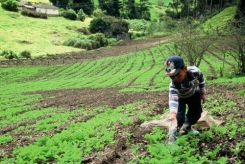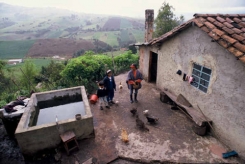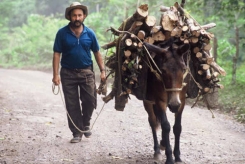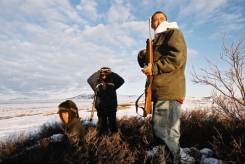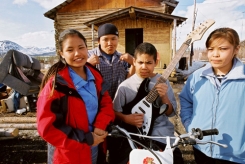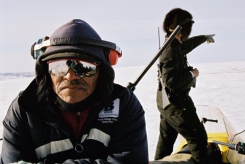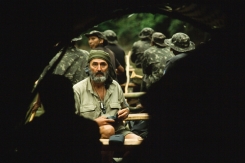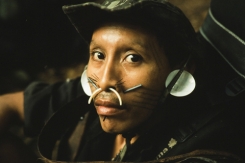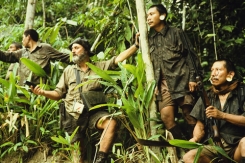Dark Edge of the Frontier
August 25th, 2011
Natives face retaliation when they stand up to those who loot the forest -- loggers vandalize Indian property amid rising tensions
by Scott Wallace
posted to NationalGeographic.com
While on assignment for National Geographic in Peru this summer, I had the privilege of visiting the Ashéninka indigenous community of Saweto, at the headwaters of the Alto Tamaya River near the border of Brazil. It can take up to eight grueling days of boat travel from the city of Pucallpa to reach Saweto, a quiet village of plank-and-thatch huts set atop the banks of the twisting Tamaya River. But we – photographer Alex Webb, University of Richmond geography professor David Salisbury, and myself – had the luck and luxury to arrive by helicopter, which delivered us as if by magic carpet onto Saweto’s soccer field in the village clearing a mere 40 minutes after lift-off from Pucallpa.
Such are the contradictions of modern life. Forty minutes in the air and you drop in on another reality, people so removed from the outside world that they can scarcely remember the last time they were visited by a government official, other than the school teacher who packed up and left weeks before the end of the academic year with no promise to return.
That doesn’t mean Saweto’s neglected residents have been left entirely to themselves. The law might be absent, but the seamy side of the global economy is very much in evidence. Drug smugglers ply the Indians’ age-old footpaths on their way to Brazil. Poachers slaughter their animals. llegal loggers pillage their forests with impunity.
The Ashéninka could easily play the victim, mope around their sun-scorched village, throw their hands up in despair. But the people of Saweto have retained a fighting spirit. Perhaps that was why gales of laughter and hoots of delight so often filled the days and nights as we accompanied them first by canoe and then by foot deep into their upland forest. It’s still a bountiful forest crisscrossed by emerald green streams of astonishing beauty. Catfish dart about the eddies; tadpoles waggle in the sandy shallows. Fresh jaguar and tapir tracks mottle the beaches along the shore.
With Salisbury’s help, the community has spent the better part of the past decade struggling to gain legal ownership to these natural riches. Only with legal title can the Ashéninka hope to throw out the loggers for good and seek more rational ways to develop their woodlands. We did witness a confrontation deep in the backwoods between the Indians and a crew of lumberjacks who had ignored their pleas to stay out. Standing up to those who routinely mock their claims marked a big step forward for the people of Saweto.
But grim tidings have reached us in recent days. The loggers returned to exact revenge, sabotaging the outboard motors of three tribespeople who took us upriver. The small, long-shafted motors – called “peck-pecks” – and the money it takes to buy them represent a small fortune for indigenous people struggling to hold their own against far more powerful forces. It will be very difficult to replace them. The loggers know this. Filling their gas tanks with sand was a calling card, a way to say: “Watch out!” Next time it could be far worse. Especially if the culprits believe that no one is watching.
We will be watching.



